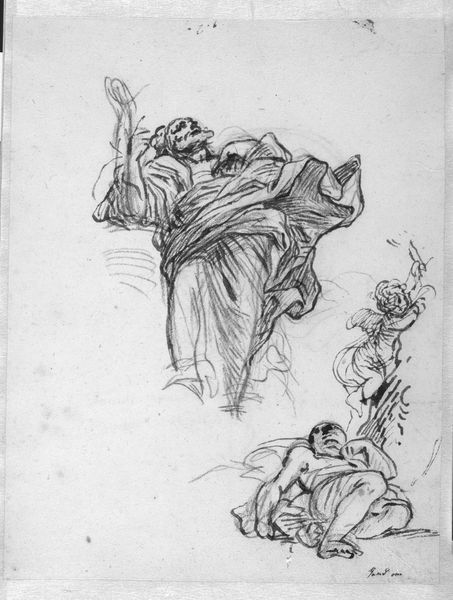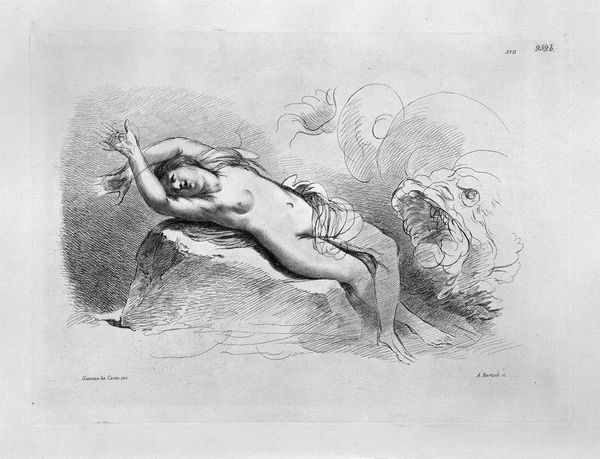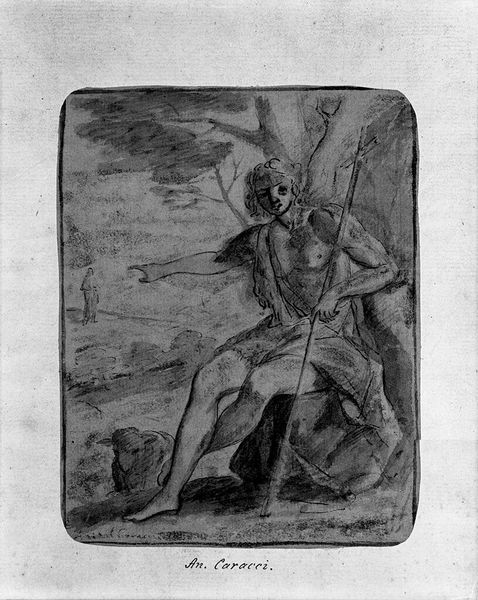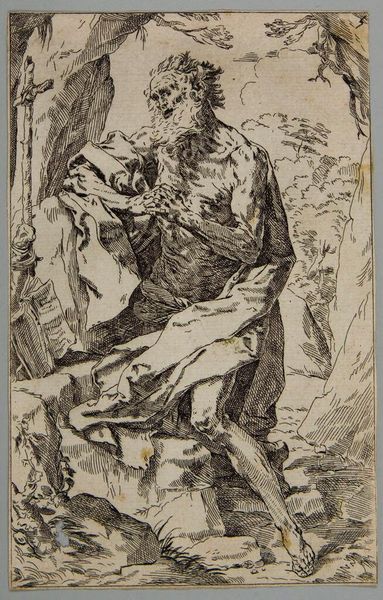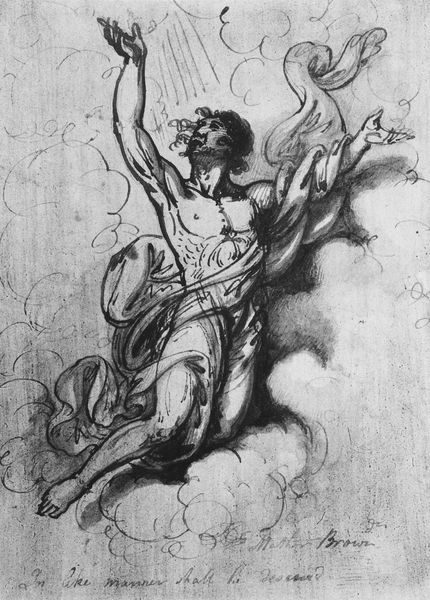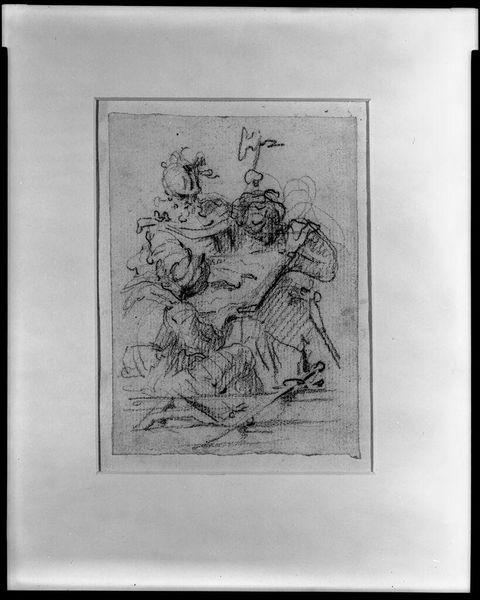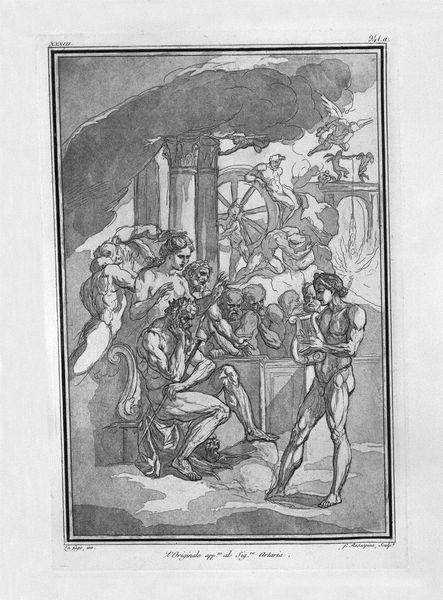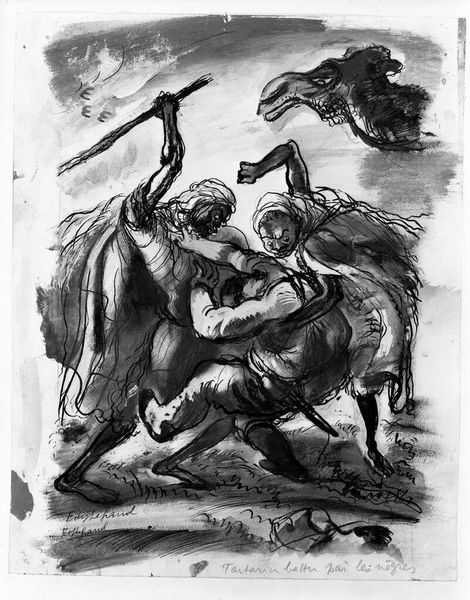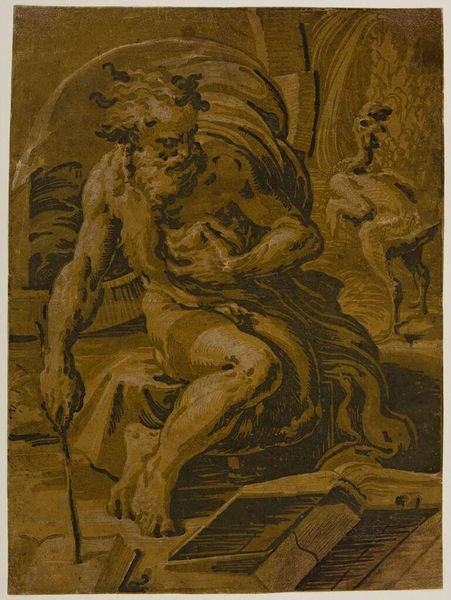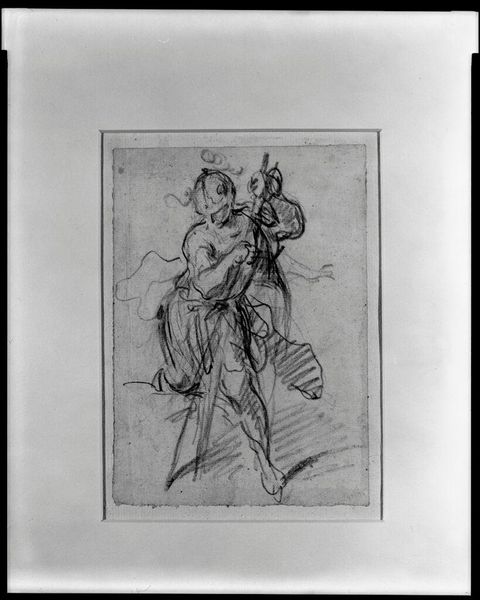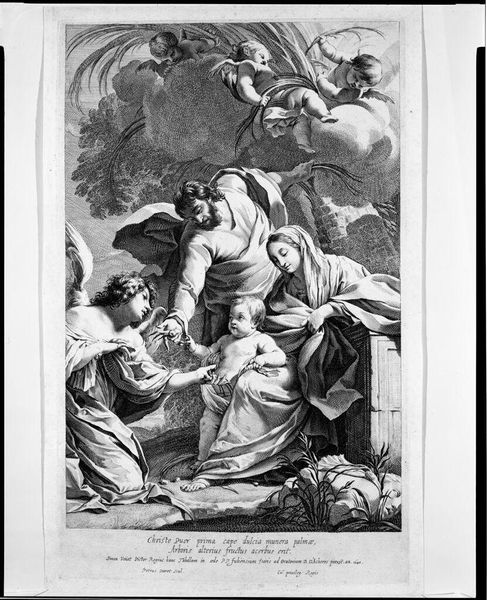
Hylas stolen by the nymphs, which are available from P by an antique painting by Santi Bartoli
0:00
0:00
drawing, pencil
#
pencil drawn
#
drawing
#
light pencil work
#
allegory
#
baroque
#
pencil sketch
#
figuration
#
pencil drawing
#
sketch
#
pencil
#
history-painting
Copyright: Public domain
Curator: Giovanni Battista Piranesi is thought to have created this pencil drawing, titled "Hylas stolen by the nymphs, which are available from P by an antique painting by Santi Bartoli". Editor: My initial impression is one of ethereal abduction; there's a forceful spiraling dynamism emphasized by the rendering. Curator: Yes, the Baroque sensibilities are evident. Look at the use of line, how it directs the viewer's eye, creating movement through the figures. There is Hylas being pulled away, cherubic figures fluttering about, and clouds suggesting a higher realm. Editor: It's more than just a formal exercise. Consider the myth of Hylas – a tale of male beauty desired and taken by nymphs. It's an early articulation, visually, of power dynamics, of vulnerability and forced submission. The drawing underscores the long tradition of objectifying the male form. Curator: But there’s the counterpoint that it's derived from classical motifs, rendered using a mastery of line and shading. Piranesi transforms, through the very materiality of the pencil on paper, what might be a scene of subjugation into an exploration of idealized forms. Note how light is utilized to emphasize the musculature of Hylas's body and create a strong interplay of highlights and shadows. Editor: But the nymphs—they're not simply beautiful forms. They represent an active, feminine force. The "stealing" frames it as an act of female agency, challenging the typical art-historical narrative where male artists and viewers control the gaze and dominate these narratives. This work is a crucial artifact in considering the portrayal of both masculine and feminine power, particularly through a queer lens. Curator: Perhaps. However, focusing purely on the social context neglects the complexity of Piranesi's craft. There’s deliberate spatial ambiguity, causing us to consider not only "what" is represented but also "how." This constant negotiation is a beautiful compositional tension. Editor: Agreed, it is in this tension where its value lies. This intersection, though complex, lets us address the portrayal of historical events and aesthetic values with new understanding. Curator: Indeed. Studying pieces like this offers fresh perspectives that enhance our ability to understand past artists and artworks.
Comments
No comments
Be the first to comment and join the conversation on the ultimate creative platform.
